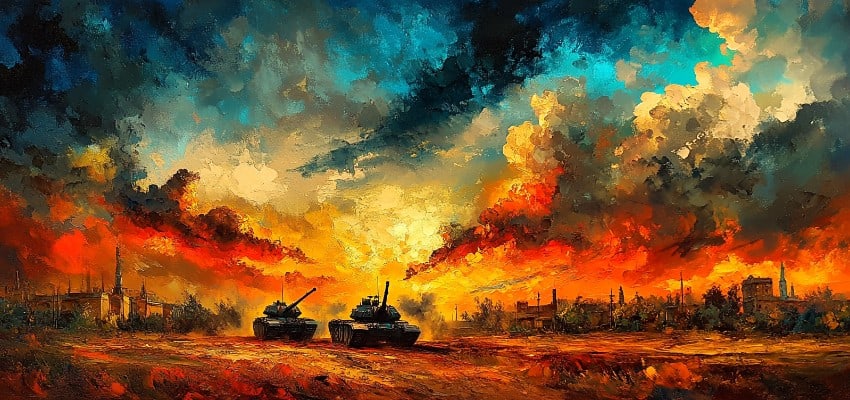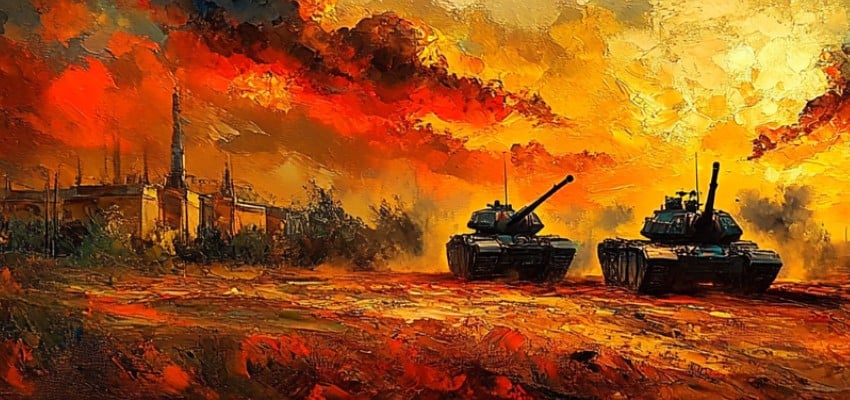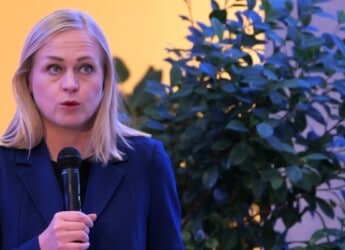Editor’s Note: This article, based on reporting from the Institute for the Study of War (ISW), explores the key developments in the Russian offensive campaign from September 27-28, 2024. In this crucial phase, Russian forces, supported by Chinese military aid, made modest territorial gains, while Ukrainian resistance orchestrated a high-profile assassination deep inside Russia. The geopolitical landscape grows increasingly complex as Russia faces international backlash for its foreign policy in the Middle East. Meanwhile, internal struggles, legislative adjustments, and battlefield stalemates continue to define the war’s trajectory. This report captures the evolving storyline of a conflict that remains unresolved, driven by shifting alliances and ongoing military and diplomatic escalations.
For those seeking to grasp the full scope of this evolving landscape, the complete updates from the Institute for the Study of War serve as an invaluable resource.
Content Assessment: Russia’s War Effort Bolstered by Chinese Military Support as Ukraine Strikes Back
Information - 92%
Insight - 91%
Relevance - 90%
Objectivity - 92%
Authority - 94%
92%
Excellent
A short percentage-based assessment of the qualitative benefit expressed as a percentage of positive reception of the recent article from ComplexDiscovery OÜ titled, "China’s Growing Role in the Ukraine Conflict: Support for Russia Exposed."
Background Note: ComplexDiscovery’s staff offers distinctive perspectives on the Russo-Ukrainian war and Iran-Israel conflict, informed by military experience on the West German, East German, and Czechoslovakian border during the Cold War and in Sinai as part of Camp David Accord compliance activities. This firsthand regional knowledge has been further enhanced by recent staff travels to Eastern European countries, including Estonia, Latvia, Lithuania, and Poland. These visits have provided up-to-date, on-the-ground insights into the current geopolitical climate in regions directly impacted by the ongoing conflict.
Combined with cybersecurity, information governance, and eDiscovery proficiency, this multifaceted experience enables comprehensive analysis of these conflicts, including the critical impact of cyber warfare, disinformation, and digital forensics on modern military engagements. This unique background positions ComplexDiscovery to provide valuable insights for conflict-related investigations and litigation, where understanding the interplay of technology, data, and geopolitical factors is crucial.
Russo-Ukrainian Conflict Update*
China’s Growing Role in the Ukraine Conflict: Support for Russia Exposed
ComplexDiscovery Staff
The war in Ukraine continues to evolve with each passing day, marked by strategic advances, shifting alliances, and significant battlefield events. The period from September 27 to 28, 2024, highlights crucial developments across several theaters of conflict. From increasing Chinese support for Russia’s military effort to internal political and legal adjustments in Moscow, the landscape of the war is shaped by both domestic and international dynamics. This report synthesizes the most critical movements and their implications, focusing on battlefield events in Ukraine, international reactions, and Russia’s military strategy.
China’s Growing Military Support for Russia
Western officials have repeatedly raised alarms over China’s involvement in supporting Russia’s war effort. During this reporting period, evidence emerged of a Chinese company supplying military drones to Russia for use in Ukraine. The agreement between this Chinese company and Russia, which reportedly began in 2023, underscores a deepening military-technical cooperation between the two nations. Although China has postured as a neutral party advocating for peace in Ukraine, its substantial contributions to Russia’s drone program reveal a more complex and potentially destabilizing role in the conflict.
Beyond drones, U.S. Secretary of State Antony Blinken provided further evidence of China’s material support for Russia’s war machine. He noted that 90% of Russia’s imports of microelectronics—crucial components for missile, rocket, and armored vehicle production—come from China and Hong Kong. This trade underscores the vital role China plays in sustaining Russia’s military capabilities despite international sanctions.
China’s assistance also extends beyond purely technological support. The People’s Republic of China (PRC) is increasingly seen as a key supplier of dual-use items that are critical to Russia’s war production efforts. While Western sanctions have targeted Russia’s military-industrial base, Chinese exports have provided Moscow with an alternative source of essential materials. This growing relationship between Moscow and Beijing raises questions about China’s long-term strategic objectives in supporting Russia and further complicates the diplomatic narrative of China as a neutral mediator in the war.
Ukrainian Resistance and Assassinations Inside Russia
In a significant development on September 28, Ukrainian media reported the assassination of Colonel Aleksei Kolomeystev, a key figure in Russia’s drone warfare operations. The assassination was reportedly coordinated by the Ukrainian Main Military Intelligence Directorate (GUR) and unspecified Russian resistance groups. Colonel Kolomeystev, the head of Russia’s 924th State Center for Unmanned Aviation, was responsible for training drone operators, including operators for Shahed-type kamikaze drones, which have become a critical element of Russia’s aerial assaults on Ukraine. His assassination in Moscow Oblast marks a symbolic and tactical blow to Russian drone warfare capabilities.
While the GUR did not explicitly take credit for the assassination, the operation showcases Ukraine’s increasing ability to strike deep into Russian territory, leveraging internal resistance movements. This action not only disrupts Russia’s operational capabilities but also indicates that Ukraine is able to coordinate with anti-regime elements inside Russia. These operations are becoming more sophisticated, highlighting Ukraine’s growing intelligence and counterintelligence capabilities in its war of attrition against Russia.
The assassination of a high-profile Russian military officer is likely to create ripples within Russia’s defense establishment, where the ongoing conflict has exposed vulnerabilities in Russian security and internal cohesion. Moscow’s reluctance to publicly acknowledge the assassination underscores the sensitive nature of these incursions and the potential impact on domestic morale.
Russia Condemns Israeli Actions and Aligns with Hezbollah
Beyond the battlefield, Russia’s foreign policy took center stage with its strong condemnation of Israel following the killing of Hezbollah Secretary-General Sayyed Hassan Nasrallah in an Israeli airstrike on Beirut. On September 28, the Russian Ministry of Foreign Affairs labeled the strike as a “political assassination,” warning Israel against further escalations in the region. The swift and decisive nature of Russia’s reaction highlights Moscow’s close ties to Hezbollah and Iran, both key players in the Middle East’s geopolitical landscape.
Russian Foreign Minister Sergei Lavrov also issued a joint condemnation of Israeli actions in Syria during a meeting with his Turkish and Iranian counterparts. Russia’s alignment with Hezbollah, and its vocal opposition to Israeli military activities, illustrates the broader geopolitical stakes Russia has in the Middle East. As the war in Ukraine stretches Russian resources and diplomatic bandwidth, Moscow is keen to maintain its alliances and influence in other regions where it holds strategic interests.
This development underscores Russia’s intent to play a balancing role in the Middle East while continuing its military campaigns in Ukraine. Russia’s opposition to Israel’s actions may also be aimed at strengthening ties with Iran and maintaining a foothold in Syria, where it has played a pivotal role in supporting the Assad regime.
Battlefield Advances and Stalemates
The fighting on Ukraine’s frontlines remains intense, with both sides vying for control of key territories. Russian forces continued their operations in Kursk Oblast, a region that has seen numerous engagements. Ukrainian forces, while actively conducting assaults in Glushkovsky Raion, failed to make significant territorial gains. However, Russian forces also made only marginal advances, particularly near Viktorovka and Plekhovo, despite deploying elite airborne units like the 83rd Airborne Brigade. This indicates that both sides are facing formidable resistance in their attempts to push through the frontlines in this sector.
Meanwhile, in Eastern Ukraine, Russian forces have ramped up efforts to secure the eastern bank of the Oskil River, particularly around Kupyansk. Geolocated footage confirmed Russian advances southeast of Kupyansk, with Russian forces targeting Ukrainian positions in villages like Synkivka and Kucherivka. Despite these efforts, the Ukrainian military has mounted strong counterattacks, particularly near Nevske, halting Russian attempts to rapidly consolidate their territorial gains.
The strategic goal for Russia in this region appears to be securing the Oskil River, which would provide a defensible front and facilitate the redeployment of forces to other critical areas. However, the Ukrainian military’s defensive operations in the Kupyansk-Svatove-Kreminna line have complicated Russia’s efforts, with Ukrainian forces launching counteroffensives and demonstrating resilience in key sectors.
In the Donetsk region, Russian forces have maintained pressure, conducting multiple assaults on Chasiv Yar and other key settlements. However, Ukrainian defenses have thus far held firm. While Russian forces have made incremental advances into Toretsk and southeast of Pokrovsk, these gains have been limited in scope and have come at a high cost. Russian attempts to encircle key settlements like Selydove have also met with limited success despite reports of some tactical advances by Russian infantry groups.
Russian operations in Vuhledar and the surrounding areas have also intensified, with reports of mechanized assaults aimed at advancing on the city’s eastern and western flanks. Although Russian milbloggers claimed significant progress, Ukrainian sources have disputed these reports, and no visual confirmation of major territorial gains has been observed.
Russia’s Internal Maneuvers: Legal Amnesty for Soldiers
Amid mounting personnel shortages, Russia has introduced new legislation to provide amnesty for individuals accused of crimes if they agree to serve in the military. This policy is part of a broader strategy to replenish the ranks of Russian forces without resorting to a full-scale mobilization. The legislation is reportedly being implemented across several Russian regions, including Bryansk, Nizhny Novgorod, and occupied Crimea. This move reflects the Kremlin’s increasing desperation to maintain combat power on the frontlines, particularly as casualties mount and morale wanes among the Russian troops.
Russia’s willingness to offer legal amnesty in exchange for military service illustrates the lengths to which the government is prepared to go in order to sustain its war effort. However, the reliance on criminal recruits, often poorly trained and lacking discipline, has raised concerns about the effectiveness and cohesion of Russian military units, particularly in high-intensity combat situations.
Russian Drone and Missile Campaigns
Russia’s drone and missile campaign against Ukraine shows no signs of abating. On the night of September 27-28, Russian forces launched a series of ballistic and cruise missile strikes, along with a barrage of Shahed-136 drones, targeting Ukrainian infrastructure and civilian areas. Ukrainian air defenses successfully intercepted a majority of the incoming drones, particularly in Kyiv, Odesa, and Dnipropetrovsk oblasts. However, some missiles managed to hit targets in Dnipro and Odesa, causing significant damage to local infrastructure.
The sustained use of Shahed drones underscores Russia’s reliance on drone warfare, facilitated by its high production rates at the Alabuga Special Economic Zone in Tatarstan. The facility has been ramping up drone production throughout 2024, and by August, it was estimated to be producing over 6,000 Shahed-136 drones annually. Despite high interception rates, Russia’s ability to maintain a steady supply of drones ensures that Ukrainian air defenses remain stretched.
Ongoing Stalemates and Escalation
The developments from September 27-28, 2024, highlight the multi-faceted nature of the war in Ukraine. While Russian forces continue to push for territorial gains, their advances are slow and met with fierce Ukrainian resistance. On the international stage, Russia’s alliances and diplomatic maneuvers, particularly with China and its stance on Middle Eastern conflicts, reflect a broader geopolitical strategy aimed at balancing multiple interests. As the war grinds on, both sides are showing signs of exhaustion, but neither appears willing to back down, suggesting that the conflict will continue to escalate in both scale and complexity.
News Sources
As a leading source for cybersecurity, information governance, and legal discovery insights, including international investigations and litigation, ComplexDiscovery OÜ recognizes the importance of awareness regarding alleged and documented criminal acts, particularly in the context of the Russia-Ukraine conflict. While we, following the lead of the Institute for the Study of War (ISW), do not provide detailed coverage of war crimes in our primary reports, we encourage professionals within the eDiscovery ecosystem to stay informed about these activities. This awareness is crucial for understanding potential future legal actions and responsibilities.
Detailed Reporting with Maps for September 27-28, 2024, from the ISW – Mouseover to Scroll
Russian Offensive Campaign Assessment - September 27-28 2024Review the Detailed Reporting and Maps PDF
About the Institute for the Study of War Research Methodology
ISW’s research methodology relies on both primary and secondary sources, enabling researchers to develop a comprehensive understanding of the situation on the ground. In order to analyze military and political developments in any given area, ISW’s research analysts must wholly understand the systems of enemy and friendly forces. They must also understand the population demographics, physical terrain, politics, and history of that area. This lays the analytical foundation for understanding the reasons for particular developments and fulfilling their assigned research objectives. ISW analysts also spend time in places like Iraq, Afghanistan, and elsewhere in order to gain a better understanding of the security and political situation and to evaluate the implementation of current strategies and policies. Our researchers compile data and analyze trends, producing a granular analysis of developments in areas of research, producing an accurate, high-resolution, timely, and thorough picture of the situation. ISW’s research methodology guarantees its success and commitment to improving the nation’s ability to execute military operations, achieve strategic objectives, and respond to emerging problems that may require the use of American military power.
About the Institute for the Study of War
The Institute for the Study of War advances an informed understanding of military affairs through reliable research, trusted analysis, and innovative education. They are committed to improving the nation’s ability to execute military operations and respond to emerging threats in order to achieve U.S. strategic objectives. ISW is a non-partisan, non-profit, public policy research organization.
Learn more, get involved, and contribute today.
Additional Reading
- From Dissent to OSINT? Understanding, Influencing, and Protecting Roles, Reputation, and Revenue
- [Annual Update] International Cyber Law in Practice: Interactive Toolkit
- Data Embassies: Sovereignty, Security, and Continuity for Nation-States
Assisted by GAI and LLM Technologies
* Sourced and shared with direct express permission from the Institute for the Study of War (ISW).
Source: ComplexDiscovery OÜ



























